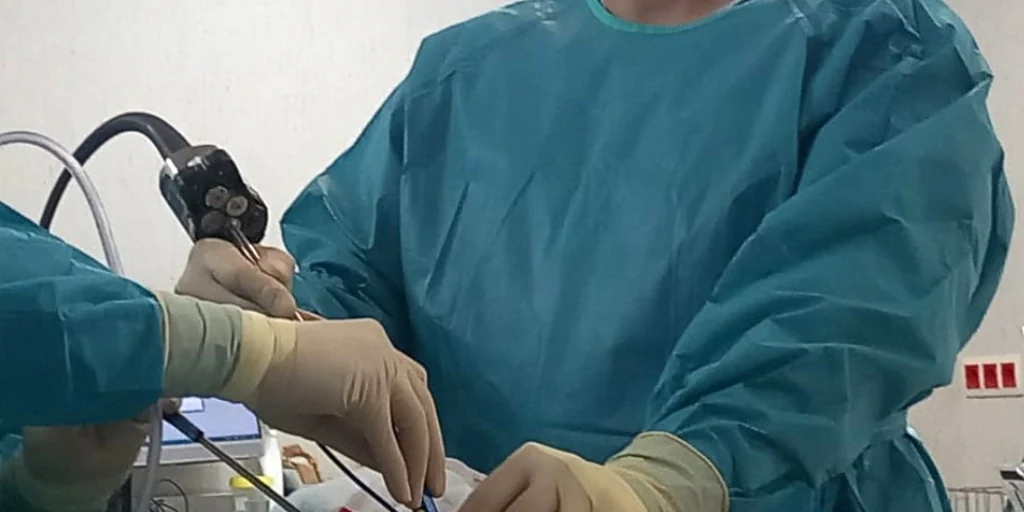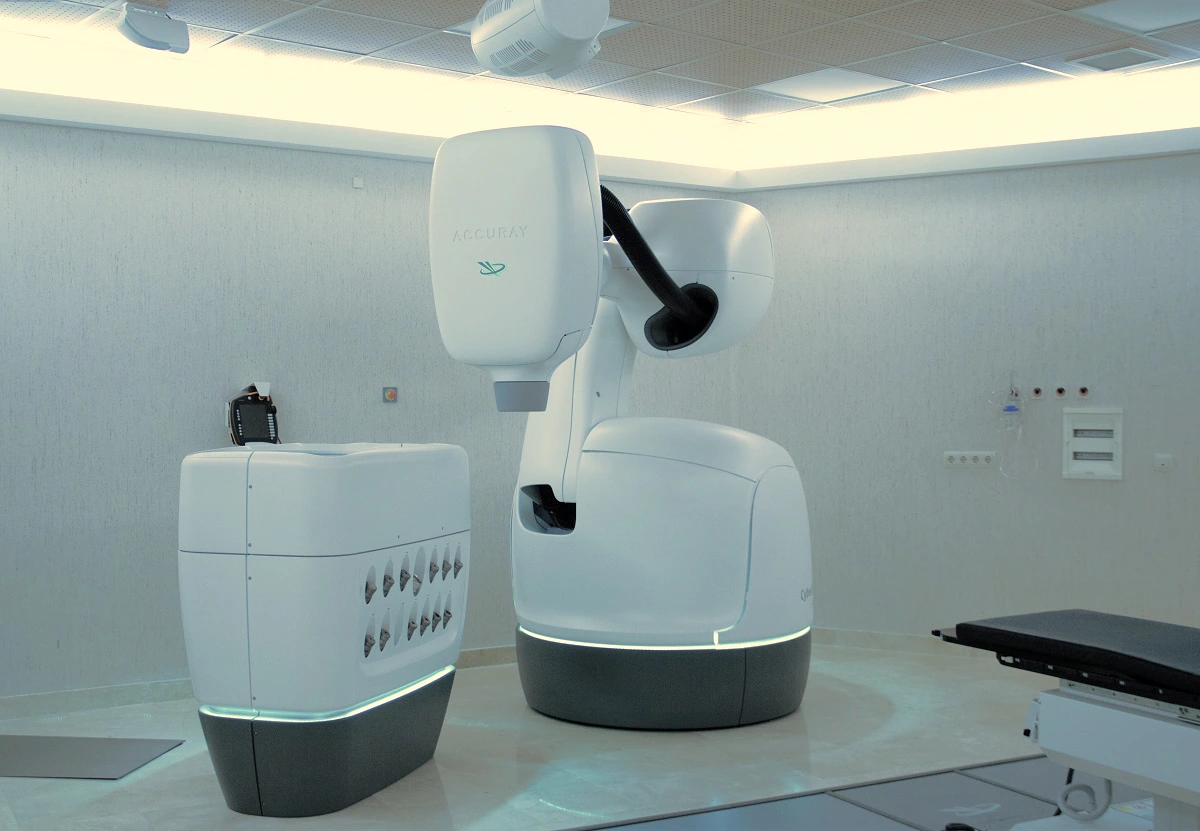breakthroughs in the fight against lung cancer

Rubera International Hospital has established itself as a benchmark in the field of oncology, offering oncological treatment has developed an interdisciplinary approach that improves survival and quality of life of cancer patients.
Thus, in lung cancer fourth most common among the entire population, according to the Spanish Association Against Cancer -, Rubera International Hospital offers its patients safer and less invasive treatment innovations. Among them stand out surgical technology Uniportal VAT and Uniportal RAT, TTFieldsthe CyberKnife Stereotactic Body Radiation Therapy (SBRT) system and other important innovations in radiation oncology, among others.
Technique minimally invasive robotic surgery Uniportal VAT and Uniportal RAT – the most advanced and least invasive to date – allow Rubera International Hospital to perform previously unthinkable interventions to treat complex lung tumors through a single incision, significantly reducing pain and patient recovery time. robotics using this technique provides unparalleled accuracy thanks to 3D vision and its special tools.
The creator of this surgical technique and its representative at the Madrid Center is Dr. Diego Gonzalez Rivas. “Unlike traditional robotic technology, which requires 4 or 5 cuts, we uniportal robotic technology We make a single cut 3 or 4 centimeters long. This results in less pain for the patient, better recovery and fewer complications,” explains Dr. Diego Gonzalez Rivas.
Dr. Regulo Avila, director of minimally invasive thoracic surgery at the Ruber Internacional Hospital, says he is honored to have Dr. Gonzalez Rivas on his team, with whom he works hand in hand in the operating room. “We’ve already had several very difficult cases that in any other center they would have to make large incisions to operate on them, and here with the help of a single portal technique we were able to operate on them very safely and effectively, with outstanding results, especially in terms of the patient’s recovery, and after two to three days he was already at home,” explains Dr. Avila.
Another innovative approach to fighting lung cancer is called TTFields. (Fields of Tumor Treatment). This new treatment involves “injecting electrical currents that interfere with the basic survival mechanisms of tumor cells,” explains Dr. Antonio Calles, a medical oncology specialist in the Department of Thoracic/Pulmonary Tumors at the Rubera International Hospital.
Lung cancer patientand places adhesive electrodes on the chest which create an electric field. These fields act directly on tumor cells, slowing down their division and growth. The electrodes are connected to a current generator, which the patient must carry in a backpack or shoulder bag for at least 18 hours a day.
It is usually well tolerated and has few side effects. To get started careAs explained by Dr. Mª Angeles Vaz, specialist in medical oncology at the Department of Sarcomas and Soft Tissue Tumors of the Rubera International Hospital, an assessment by the doctor responsible for oncological treatment is necessary, and if it is considered that the patient can benefit, the device is prescribed.
TTFfields have demonstrated effectiveness in non-small cell lung cancer—the most common cancer in Western countries—as well as mesothelioma.
On the other hand, radiation oncology is one of the specialties that has benefited the most from important technological advancesand in this area, the Madrid Hospital is at the forefront, offering increasingly satisfactory results in the treatment of lung tumors, as well as other types of cancer.
A good example of this is that Ruber Internacional was the first center in Spain to implement the CyberKnife systemthe latest technology in robotic radiosurgery.

CuberKnife
He CyberKnife It consists of a robotic arm capable of following tumor movement during irradiationallowing for stereotactic body radiation therapy (SBRT), a highly precise radiation method that allows very high doses of radiation to be administerednever achieved with traditional radiation therapy, with minimal doses to surrounding healthy tissue, in multiple sessions or even in a single session. And all this without the need for invasive immobilization systems or hospitalization.
Thus, this technology makes it possible to irradiate tumors in mobile areas such as the lungs with submillimeter precision and high doses in just a few sessions. “The treatment has become faster and more comfortable: sessions now last less than 30 minutes, which is especially useful for patients with pain or difficulty breathing,” explains Dr. Aurora Rodriguez, director of the clinic. Radiation Oncology Service from Rubera International Hospital.
These treatment They are supported by advanced imaging techniques such as PET-CT, 4D CT and MRI, which allow more accurate determination of the amount of radiation exposure.
“In this way, not only specific lesions in areas such as the lungs can be successfully treated, but also others such as the brain, spine, lymph nodes, liver, pancreas, prostate or soft tissue,” notes the doctor. Amalia Sotoka, radiation oncologist, specialist in lung cancer, breast cancer and head and neck tumors, specializes in radiosurgery using the CyberKnife robotic system.
Thus, Rubera International Hospital provides wide range of treatmentsWe offer effective treatments tailored to the type and stage of cancer, using advanced technology, innovative techniques and a multidisciplinary and highly specialized medical team.
